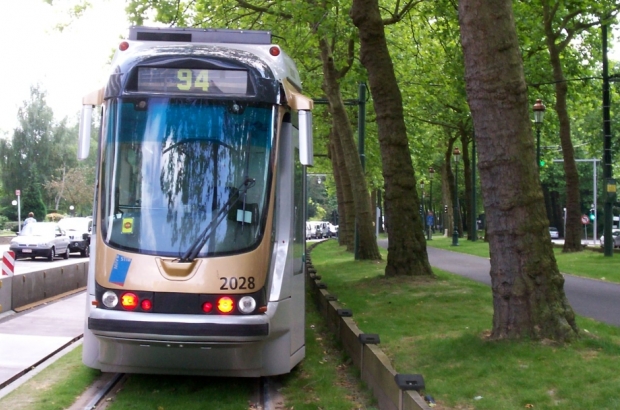- Daily & Weekly newsletters
- Buy & download The Bulletin
- Comment on our articles
On the right track: ambitious plans for public transport in Brussels
“An advanced city is not a place where the poor have cars. It is where the rich use public transport,” Enrique Peñalosa, former mayor of Bogota, once said. That's an attractive and ambitious goal considering the daily traffic jams and the air pollution that weigh heavy on our time and health. The new management agreement between the government of the Brussels Capital Region and the public transport company STIB/MIVB is a step in this direction. Its aims include transporting 415 million passengers a year by 2018 - up from 348 million last year; a market share of 50% of all motorised transport in Brussels - up from 46% in 2010; and having 60% of Brussels citizens using public transport at least once a week.
The agreement establishes the main operational objectives to expand and strengthen the Brussels public transport network - bus, tram and metro - until 2017. It also specifies the technical and financial means that will be provided to accomplish these goals. Let's take a closer look at some of the most interesting parts of this 200-page document.
Most striking are the plans for 'heavy infrastructure’ like new tram lines and the expansion of the metro. Some examples:
- Bus 71 through Ixelles, notorious for its huge delays and crowded buses, will finally become a tram by 2017
- The UZ-Brussels hospital in the north of the city will get a direct connection to the centre via a new tram 9 through Jette by 2015
- Tram 94 will be extended to metro station Roodebeek and then Marcel Thiry in Evere
- The much-discussed new metro line to Schaerbeek will not be ready for some time, but planning and preparations will be well under way by the end of this management agreement. For instance, the present pre-metro between North and South railway stations will be transformed to a full-blown metro, ready to be extended to the north of Brussels by 2020
- Under the Pulsar project, metro lines 1 and 5 will be fully automated by 2018. This means special access gates and no more train drivers, but also shorter waiting times and vastly increased capacity on these heavily used lines
Although the expansion of public transport by heavy infrastructure is very expensive, there is a wide political consensus over investing in underground capacity. That is not the case for overground measures to improve the service and efficiency of bus and tram lines. Few roads in Brussels can accommodate the variety of demands for driving lanes, parking spots, separate bus and tram lanes to speed up the service, cycle paths and large pavements at the same time. So, the combination of Brussels' historically narrow streets and a high population density forces politicians to make choices. In a region in constant financial need, we might ask ourselves why eliminating aboveground parking space to create a separate bus lane seems to need more political courage than assigning a big share of the regional budget for extending our heavy underground infrastructure.
Talking about bus lanes, we see for example that bus speed in Brussels is quite disappointing. One fifth of all bus lines have an average speed below 12kph, and less than half of all bus lines have an average speed of 17kph. Unlike building a new metro line, converting overground parking spaces or car lanes into bus lanes is technically rather easy and quick to do. The impact of such measures is huge and immediately visible. There are several examples in cities like Amsterdam, Dublin and Paris, where local governments successfully chose to improve their bus infrastructure. This management agreement focuses on traffic-light management to increase the average bus and tram speed by almost 30%, which is a step in the right direction.
STIB's recent annual customer satisfaction poll showed that Brussels’ public transport users gave it a score of 6.6 out of 10, exactly the same as two years ago. Although the STIB itself seemed happy with it, 6.6/10 cannot be called ambitious. This means there is a great amount of work to do for the implementation of the management agreement to bridge these gaps in Brussels' public transport infrastructure. A lot will depend not only on the political will to make big investments in underground infrastructure but also on the courage to make political decisions about the overground redistribution of space in favour of buses and trams. Hopefully, this new agreement can raise customer satisfaction to an outstanding score and contribute to a better mobility and better general health of our great city. So the poor and the rich alike can enjoy top-class public transport.



















